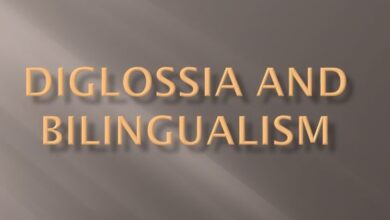Discursive genres Characteristics and types
Discursive Genres
The concept of discursive genres was proposed by the Russian author Mikhail Bakhtin and refers to a series of stable sentences of language that are characterized by having a series of similarities. For example, comics, advertisements, chronicles, judicial writings, etc. are discursive genres for this author. But traffic signs, the way in which a couple relates, among others, are also discursive genres. Discursive genres Characteristics and types
The discursive genre develops in each human activity and is typical of language. In addition, the discursive genres are stable. That is, the writing, style, and syntactic organization in general lines are maintained. Each of these spheres has particular characteristics. The breakdown of one of these stable characteristics generates some disorganization.
In each of these areas, the word is needed as a mediator and discursive genres are nothing more than structures that contain and characterize in a particular way the message of a speaker. Each speaker must adapt to the characteristics of each gender. Discursive genres Characteristics and types
Characteristics of discursive genres
Speaker or enunciator
The speaker or enunciator is the sender of the message and must take into account each of the characteristics described below so that the message (statement) is understood by the addressees.
Singularity and plurality
Although Bajtin has indicated that each discursive genre has characteristics that distinguish and oppose it from other discursive genres, it is also essential to analyze each statement in a particular way.
Purpose
Each and every one of these genres has the function of communication between a speaker or sender and a recipient or receiver, facilitating the mode of communication through discursive genres is that the sender uses certain linguistic tools to elaborate the message and its correct interpretation by the receiver. Discursive genres Characteristics and types
Types of discursive genres
Discursive genres can be classified in various ways, but one of the main classifications that we must do is the following:
- Written discursive genres. They are also called primary discursive genres. In these, the enunciator (sender) must take into account that the receiver of the message does not share the same time as the enunciator. Therefore, you must adapt the document considering this factor.
- Oral discursive genres. In oral discursive genres, the enunciator makes use of para-linguistic functions (gestural, non-verbal) to transmit the message or statement. This is possible because the speaker and the addressee share (in almost all cases except in conversations through a mass communication medium) the same space and time. Discursive genres Characteristics and types
Textual schemes
They refer to the type of narration they use. Some may resort to the use of dialogue. Others may use description in narratives or argumentation in descriptions, etc.
Classification
Broadly speaking, discursive genres can be classified according to their theme:
- Humanistic
- Scientific-technical
- Legal
- Academic
Permeability
The degree of permeability will vary from one discursive genre to another and refers to style variations that the speaker introduces in the format. This depends on the type of recipient of the particular discourse genre. There are certain literary genres that tolerate a higher degree of permeability than others. Discursive genres Characteristics and types
Stability
They are stable when they respect the following conditions in the statement:
- Structure
- Syntactic organization
- Verb modes and tenses
- Lexical resources to turn to
Discursive description
Each text must have 3 characteristics not only to be considered as such but also (and fundamentally) to be understood by the receiver / s.
- Textual coherence. It means that the text must have an integral organization.
- Discursive cohesion. It refers to the linguistic resources that the writer or speaker must use in order for the text or argument to make sense. For example words, composition, sentence, commas, and periods.
- Adequacy. It refers to the adaptation or adaptation to the context (cultural, political, social, environmental, etc.).
Contents
As mentioned above, its content and flexibility will depend on each particular genre. This condition is also particular with respect to the length of each content. Discursive genres Characteristics and types

